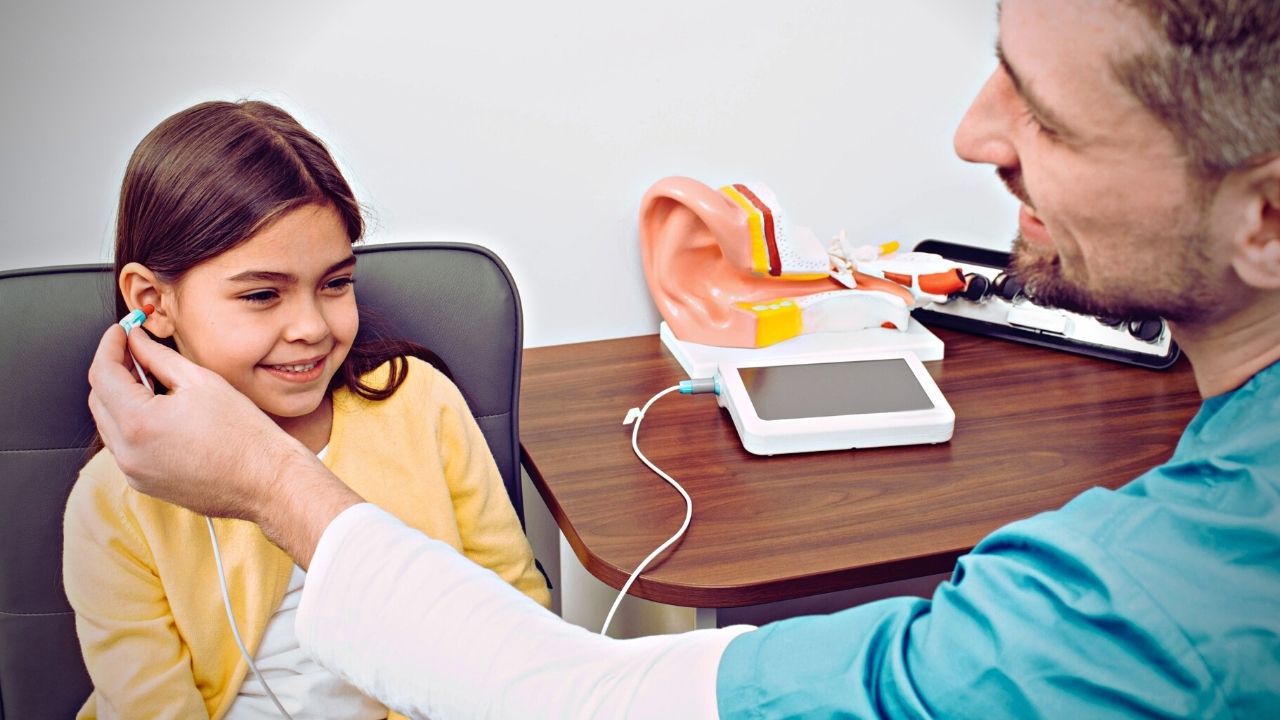Researchers from the University of Arkansas for Medical Sciences (UAMS) have evaluated the effectiveness of various hearing screening tools in a rural school setting. Their findings were published in Ear and Hearing, the official journal of the American Auditory Society.
Samantha Kleindienst Robler, Au.D., Ph.D., and Susan Emmett, M.D., MPH, led the research team, which included 11 co-authors. The study evaluated the accuracy of different screening tools in detecting hearing loss and middle ear disease in rural Alaskan children from preschool to 12th grade.
The team examined three screening tools, including mobile health (mHealth) pure-tone screening, distortion product otoacoustic emissions (DPOAE), and tympanometry. They found that tympanometry, an objective test of middle ear health, was an essential tool for detecting infection-related hearing loss, common in rural environments.

Samantha Kleindienst Robler, Au.D., Ph.D., (left) associate director of the UAMS Center for Hearing Health Equity, and Susan Emmett, M.D., MPH, director of the center, recently authored an article in Ear and Hearing evaluating the accuracy of various hearing screening tools in a rural school setting. Credit: UAMS
The researchers concluded that tympanometry was a key component in the hearing screening protocol, especially in areas with a higher prevalence of infection-related hearing loss.
The researchers also discovered that adding tympanometry to a screening program in rural and underserved areas might be challenging. Commercially available tympanometers are expensive and require highly trained audiologists. To address this gap, Robler and Emmett received a $50,000 pilot grant from the UAMS Translational Research Institute to develop a low-cost, cell phone-based tympanometer. Their aim is to encourage uniform, routine screenings by schools and community health workers to identify children who are at risk of developing infection-related hearing loss.
Infection-related hearing loss is a leading cause of preventable hearing loss in children. It affects speech and language development, learning ability, and the ability to find a job. Sixty percent of hearing loss in children is preventable, according to the World Health Organization, and this estimate rises to 75% in underserved communities where infection-related hearing loss is most common.
The researchers’ findings are significant, as they are the first to evaluate screening tools on such a scale. The results could inform guidelines and policy and change how school screening is performed in rural and underserved communities across the U.S. and abroad.
“No work to-date has evaluated screening tools on such a scale, and the implications for how it will inform guidelines and policy is significant. We anticipate that this paper will change how school screening is performed in rural and underserved communities across the U.S. and abroad, improving identification of infection-related childhood hearing loss in regions of the world most affected by the lifelong implications of this preventable and treatable health disparity”
Reference:
Source: UAMS






